Explore Bentota - Sri Lanka Travel, Asia
Nestled along Sri Lanka’s southwestern coast, Bentota is a tropical paradise that blends golden beaches, vibrant culture, and thrilling adventures. Famous for its calm waters, luxury resorts, and scenic river estuary, Bentota has become a top destination for travelers seeking both relaxation and authentic experiences. From serene beach walks at sunrise to adrenaline-pumping water sports, this coastal town offers a perfect balance of leisure and exploration. With its proximity to Colombo and Galle, Bentota is easy to reach, making it an ideal stop for both short escapes and extended holidays.
Population: Approximately 37,000 in 2023.
Economy: Bentota’s economy thrives mainly on tourism, which drives local businesses such as hotels, restaurants, and wellness retreats. The town also benefits from fishing, coconut cultivation, and handicrafts like wood carving and batik textiles. Many residents rely on the growing demand for water sports and Ayurvedic treatments, making tourism the backbone of both income and employment in the area.
Landmarks: Famous for Bentota Beach, Bentota River Safari, and Kande Vihara Temple.
Sri Lanka
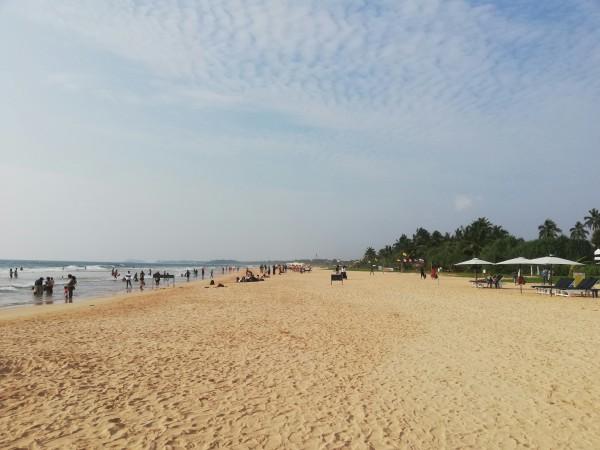
Overview of Bentota
History & Cultural Influence
Bentota is not just a haven for beach lovers but also carries a rich historical and cultural heritage. Historically, this coastal town played a significant role in Sri Lanka’s trade routes, welcoming Portuguese, Dutch, and British influences that shaped its architecture, customs, and religious landmarks.
Visitors can explore remnants of colonial architecture alongside Buddhist temples, which showcase intricate carvings and sacred statues. The town’s history is deeply intertwined with its natural surroundings, while lush gardens and backwaters reflect a harmonious relationship between culture and environment. This blend of history and nature makes Bentota more than a beach town; it’s a living story of Sri Lanka’s heritage.
Interaction with The Locals
One of the most enriching experiences in Bentota is connecting with its warm and welcoming local community. From the fishermen casting their nets at dawn to artisans crafting traditional masks and woodwork, engaging with locals offers a genuine glimpse into everyday life. Visitors can join fishing excursions, participate in cooking classes to learn Sri Lankan cuisine, or explore local markets to discover handcrafted souvenirs. Friendly smiles and the rhythmic pace of life make every interaction memorable, giving travelers an authentic taste of Bentota beyond its beaches.
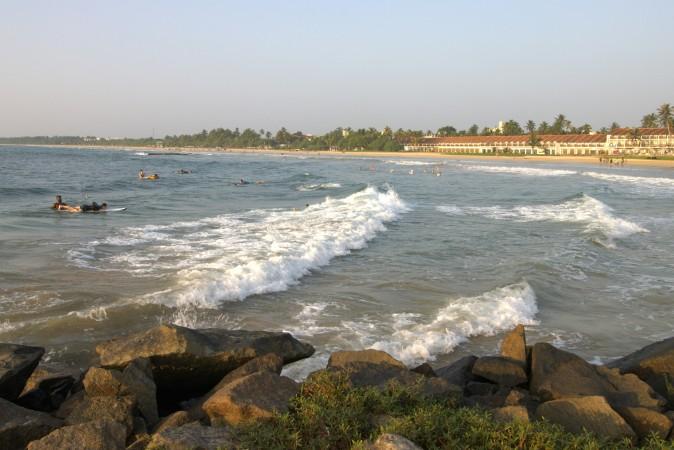
Top Attractions in Bentota
Bentota Beach
Known for its soft golden sand and calm waters, Bentota Beach is the heart of the town’s tourism. Early mornings bring peaceful walks along the shoreline, while sunsets paint the sky in shades of orange and pink. The beach is also a hub for water sports, including jet skiing, windsurfing, and banana boat rides. Families and couples alike can enjoy beachside cafés, massages, and beachfront dining, making it a versatile destination for relaxation and fun.
Brief Garden
Designed by the legendary landscaper Bevis Bawa, Brief Garden is more than a botanical attraction but an artistic experience. The estate features meandering pathways lined with tropical plants, sculptures, and serene water features. Visitors can explore hidden corners, admire vibrant flower beds, and even enjoy a quiet tea at the garden’s charming café. Brief Garden reflects Sri Lanka’s blend of creativity, nature, and colonial history, making it a haven for photographers and garden enthusiasts.
Bentota River Safari
The Bentota River winds through lush mangroves and wetlands, offering a perfect escape into nature. A river safari is ideal for spotting exotic birds, monitor lizards, and sometimes even crocodiles in their natural habitat. Knowledgeable guides provide insights into local ecology, fishing practices, and the delicate balance of this riverine ecosystem. The safari is suitable for families, photographers, and eco-tourists seeking an immersive wildlife experience in Sri Lanka.
Kande Vihara Temple
This Buddhist temple, perched on a small hill, is famous for its colossal Buddha statue, towering over the surrounding landscape. The temple’s intricately carved murals and statues depict centuries of Sri Lankan religious art. Visitors can witness monks performing rituals, meditate in the peaceful courtyard, and learn about Buddhist traditions. Kande Vihara Temple is not only a spiritual landmark but also a cultural treasure that offers insight into the local faith and artistic heritage.
Kosgoda Turtle Hatchery
A short drive from Bentota, the Kosgoda Turtle Hatchery is a sanctuary for endangered sea turtles. Here, travelers can observe baby turtles preparing for release, learn about conservation efforts, and gain hands-on experience under the guidance of local conservationists. The hatchery is committed to protecting green, leatherback, and loggerhead turtles, making it both an educational and rewarding stop for eco-conscious tourists.
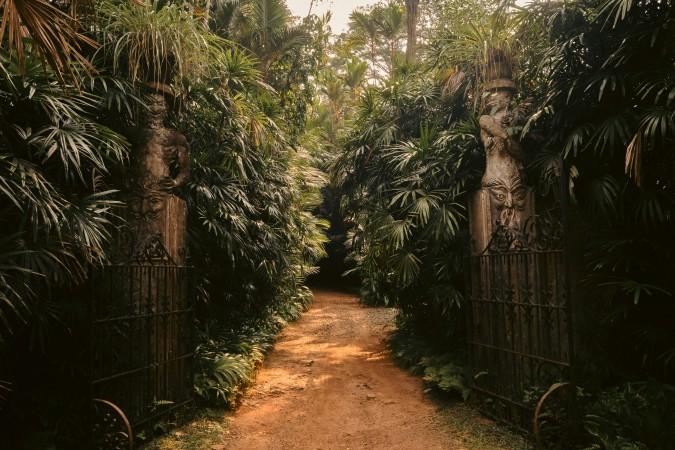
Must-Try Dishes in Bentota
- Seafood Delights: Being a coastal town, Bentota’s seafood is exceptionally fresh. Don’t miss the prawn curry, made with coconut milk and aromatic spices, or crab curry, often served in its shell with rich, tangy flavors. Grilled fish, lobster, and cuttlefish dishes are also popular.
- Hoppers (Appa): Bowl-shaped pancakes made from fermented rice flour and coconut milk, often served with sweet or savory fillings.
- Kottu Roti: Stir-fried chopped flatbread with vegetables, eggs, or meat, seasoned with spices, a must-try street food.
- Lamprais: Dutch-influenced rice and meat dish, wrapped in banana leaves and steamed to perfection.
- String Hoppers (Idiyappam): Steamed rice noodles, typically served with coconut milk, curry, or dhal.
- Pol Sambol: A spicy coconut condiment often paired with rice or hoppers.
- Parippu Curry: A simple yet flavorful lentil curry, often served as a staple with rice.
- Fish ambul thiyal: A tangy dry fish curry flavored with goraka (tamarind).
- Gotu kola sambol: A refreshing salad made with finely chopped centella leaves, coconut, and lime juice.
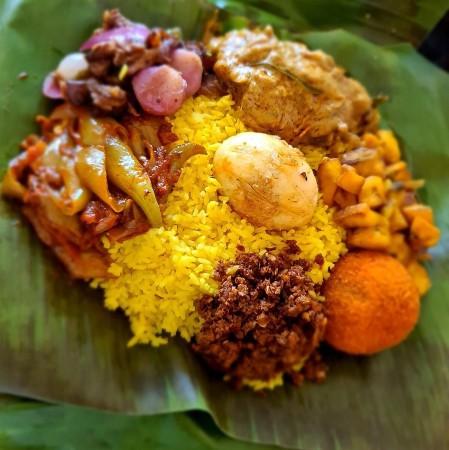
Festivals & Local Celebrations
Vesak Festival
The Vesak Festival is one of the most significant celebrations in Sri Lanka, commemorating the birth, enlightenment, and passing of Buddha. During this time, Bentota’s streets are adorned with colorful lanterns, illuminated pandals (decorative structures), and artistic displays. Locals offer free meals, and temples host candlelit processions, providing visitors with a deeply spiritual and visually stunning experience.
Sinhala and Tamil New Year
Celebrated in April, the Sinhala and Tamil New Year marks the harvest season and the start of the traditional calendar. Families engage in rituals, prepare special sweets like Kokis and Aluwa, and participate in games and community gatherings. Visitors can witness traditional customs, enjoy festive street food, and even join in simple games like olinda (tops) and pora pol (coconut knocking).
Kataragama and Local Temple Festivals
Although slightly farther from Bentota, many travelers attend Kataragama or regional temple festivals. These events feature traditional drumming, Kandyan dancing, and fire-walking rituals, offering a glimpse into the spiritual and artistic heart of Sri Lanka. Local temples in Bentota also hold smaller-scale festivals with processions, offerings, and cultural performances throughout the year.
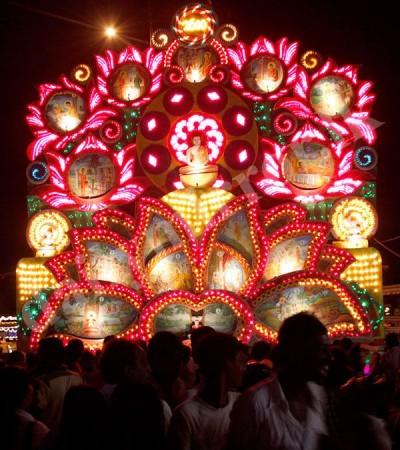
What to Do in Bentota
- Water Sports: Known as the water sports capital of Sri Lanka, Bentota offers thrilling activities such as jet skiing, windsurfing, parasailing, and banana boat rides. For underwater enthusiasts, snorkeling and diving reveal colorful coral reefs and schools of tropical fish.
- River Cruises & Safaris: The Bentota River is perfect for leisurely boat rides. Travelers can choose sunset cruises for romance or wildlife safaris through mangrove forests to spot kingfishers, water monitors, and even crocodiles. These tours often include stops at small fishing villages, adding a cultural dimension to the adventure.
- Cycling and Nature Walks: For a slower pace, cycling tours around Bentota’s countryside offer glimpses of paddy fields, local markets, and hidden temples. Nature walks in nearby reserves are perfect for birdwatchers and eco-travelers who want to explore the flora and fauna up close.
- Spa and Ayurveda Treatments: Sri Lanka is renowned for Ayurvedic wellness, and Bentota has many spas offering rejuvenating massages, herbal treatments, and yoga sessions. These ancient healing practices allow visitors to relax and recharge amidst a tropical setting.
- Family-Friendly Fun: Families can enjoy safe beach activities, visits to the turtle hatchery, and short excursions to nearby attractions. Many resorts in Bentota also provide kids’ clubs and family programs, ensuring fun for all ages.
Shopping in Bentota
- Handicrafts and Souvenirs: Bentota is known for its wood carvings, handmade masks, jewelry, and batik fabrics. These items reflect Sri Lanka’s artistic traditions and make meaningful keepsakes. Many shops allow visitors to see artisans at work, offering a behind-the-scenes look at local craftsmanship.
- Local Markets: Visiting a local market is an authentic way to experience Bentota’s community spirit. Here, travelers can browse stalls filled with spices, tropical fruits, and handmade goods. Markets are also great places to practice bargaining and enjoy small street food snacks.
- Boutique Shops: For those seeking modern style, Bentota’s boutique stores offer resort wear, wellness products, and eco-friendly items. Many shops stock sustainable goods that support local communities, making each purchase a contribution to responsible tourism.
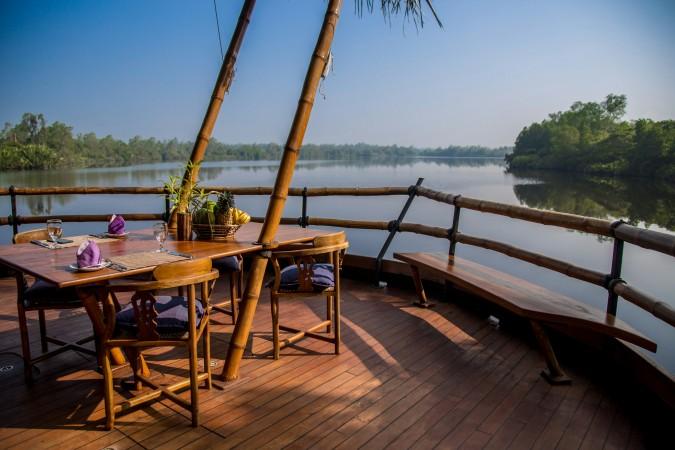
Weather in Bentota: Best Time to Visit
Overall Climate
Bentota maintains an average temperature of 27–30°C (81–86°F) annually. The warm climate is consistent, but humidity levels can vary depending on the season. Lightweight clothing and breathable fabrics are recommended for comfort.
Dry Season in Bentota (December–April)
This is the peak tourist season in Bentota. Clear skies, calm seas, and lower humidity create perfect conditions for sunbathing, water sports, and river safaris. Resorts and attractions are at their busiest, so advance booking is recommended.
Monsoon Season in Bentota (May–September)
The Southwest Monsoon brings rain showers, especially in May and June. While the sea can be rough, this period is excellent for Ayurvedic retreats, spa treatments, and cultural exploration. Fewer crowds also mean better deals on accommodation.
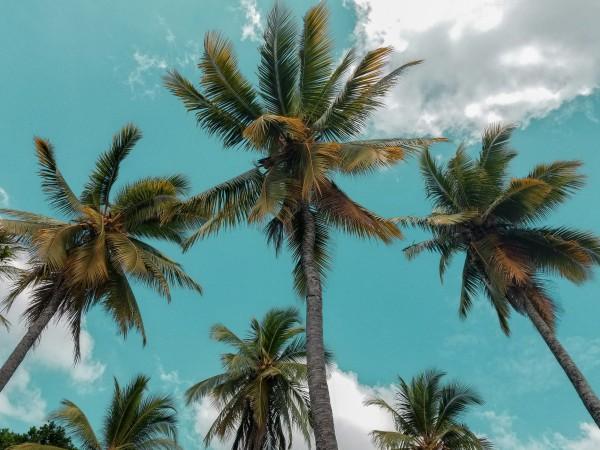
Essential Travel Information
Getting Around Bentota
- Tuk-Tuks: Tuk-tuks are the most common and convenient mode of transport in Bentota. They’re ideal for short distances, quick rides to the beach, or exploring local markets. Always agree on a price before starting the trip or request to use the meter.
- Local Buses: For budget-friendly travel, local buses connect Bentota with nearby towns like Aluthgama and Colombo. While buses can get crowded, they offer an authentic glimpse into daily Sri Lankan life.
- Trains: Bentota is part of the coastal railway line, offering scenic rides along the Indian Ocean. Trains are slower but provide beautiful views and a relaxed journey for travelers heading to Colombo, Galle, or further south.
- Private Cars & Taxis: Hiring a private car or taxi is convenient for longer trips, especially when traveling with family or luggage. Many resorts also arrange transfers for guests.
- Bicycles & Walking: Within Bentota, many travelers enjoy cycling or walking to discover hidden lanes, river views, and local shops at a leisurely pace.
ATM & Banking Services
Several ATMs are located along the main Galle Road and near major hotels and resorts. Banks such as People’s Bank, Commercial Bank, and Bank of Ceylon operate ATMs that accept Visa, Mastercard, and other international debit/credit cards. While most travelers rely on ATMs, currency exchange is available at local banks and some hotels. It’s advisable to exchange large sums at authorized banks to receive competitive rates and ensure security.
Where to Stay in Bentota
- Luxury Beach Resorts: For those seeking indulgence and relaxation, Bentota’s luxury beachfront resorts offer stunning ocean views, private pools, spa treatments, fine dining, and premium amenities. These properties typically feature direct beach access, spacious suites, and curated experiences such as yoga sessions, sunset dinners, and wellness retreats.
- Boutique Villas & Riverside Retreats: Travelers looking for tranquility and privacy can opt for boutique-style villas or riverside lodges nestled in lush gardens or overlooking serene backwaters. These accommodations often highlight Sri Lankan architecture, eco-conscious design.
- Mid-Range Hotels: Mid-tier hotels in Bentota offer a good balance between affordability and comfort. These properties often provide air-conditioned rooms, on-site dining, pools, and easy access to the beach or town center.
- Eco-Friendly Lodges: Environmentally conscious visitors can choose from a variety of eco-lodges and sustainable accommodations designed to blend into the natural landscape.
Des articles pour vous

Explore Yala National Park - Sri Lanka Travel, Asia
Tucked away in Sri Lanka’s southeastern corner, Yala National Park is where wild nature meets deep tradition. Known worldwide for its leopard population, the park is also home to elephants, sloth bears, crocodiles, and hundreds of bird species. Beyond wildlife, Yala opens doors to a cultural landscape dotted with ancient temples, Buddhist ruins, and coastal villages. For travelers seeking more than just a safari, Yala offers a chance to explore eco-tourism, local communities, and sacred heritage sites.
Population: The Yala National Park area doesn’t have a human population.
Economy: The economy around Yala National Park thrives on a blend of eco-tourism, agriculture, and local services. Safari tours, eco-lodges, and cultural experiences drive steady income for nearby towns like Tissamaharama and Kataragama, supporting thousands of families.
Landmarks: Famous for Block I of Yala and wildlife encounters, including elephants, sloth bears, crocodiles, and exotic bird species.

Explore Galle - Sri Lanka Travel, Asia
Nestled on Sri Lanka’s southern coastline, Galle is a vibrant city where history meets the sea. Its cobbled streets, colonial architecture, and serene beaches make it a must-visit destination for travelers seeking a blend of culture, adventure, and relaxation. A UNESCO World Heritage site, Galle captivates visitors with its Dutch Fort, bustling markets, and friendly locals. Whether you’re exploring the ramparts at sunset or savoring fresh seafood by the shore, Galle promises an unforgettable journey into Sri Lanka’s heritage.
Population: Approximately 113,000 in 2023.
Economy: Galle’s economy thrives on tourism, trade, and fisheries. The city’s historic fort, colonial architecture, and coastal charm draw thousands of international visitors each year, making tourism its main economic driver. Fishing remains vital for local livelihoods, supplying fresh seafood across the region.
Landmarks: Famous for the Galle Fort, Dutch Reformed Church & Maritime Museum, and Unawatuna Beach.

Explore Bentota - Sri Lanka Travel, Asia
Nestled along Sri Lanka’s southwestern coast, Bentota is a tropical paradise that blends golden beaches, vibrant culture, and thrilling adventures. Famous for its calm waters, luxury resorts, and scenic river estuary, Bentota has become a top destination for travelers seeking both relaxation and authentic experiences. From serene beach walks at sunrise to adrenaline-pumping water sports, this coastal town offers a perfect balance of leisure and exploration. With its proximity to Colombo and Galle, Bentota is easy to reach, making it an ideal stop for both short escapes and extended holidays.
Population: Approximately 37,000 in 2023.
Economy: Bentota’s economy thrives mainly on tourism, which drives local businesses such as hotels, restaurants, and wellness retreats. The town also benefits from fishing, coconut cultivation, and handicrafts like wood carving and batik textiles. Many residents rely on the growing demand for water sports and Ayurvedic treatments, making tourism the backbone of both income and employment in the area.
Landmarks: Famous for Bentota Beach, Bentota River Safari, and Kande Vihara Temple.

Explore Mirissa - Sri Lanka Travel, Asia
Mirissa is a charming coastal town on Sri Lanka’s southern shoreline. Known for its golden beaches, turquoise waters, and vibrant marine life, it has become a must-visit stop for travelers exploring the island. Many come for whale watching, surfing, and sunset views at Coconut Tree Hill, but Mirissa offers much more than postcard beauty. The fishing boats you see anchored by the bay carry generations of stories. Local traditions, delicious cuisine, and a laid-back rhythm of life shape every visitor’s experience.
Population: Approximately 4,700 in 2023.
Economy: Mirissa’s economy is largely shaped by its coastal location. Fishing has long been the backbone of local livelihoods, with generations relying on the Indian Ocean for income. In recent decades, tourism has become the main driver of growth, thanks to whale watching, surfing, and beachside hospitality.
Landmarks: Famous for Mirissa Beach, Coconut Tree Hill, and Parrot Rock Bridge.

Explore Nuwara Eliya - Sri Lanka Travel, Asia
Tucked away in the Central Highlands of Sri Lanka, Nuwara Eliya is often called “Little England”. With its rolling tea plantations, cool misty mornings, and colonial charm, this mountain town feels like a step into another world. Travelers come here to breathe fresh air, walk through flower gardens, sip the finest Ceylon Tea, and enjoy a pace of life far from the island’s busy cities. Whether you’re drawn by scenic landscapes, heritage architecture, or the warmth of its people, Nuwara Eliya is a destination that blends nature, culture, and history in perfect harmony.
Population: Approximately 781,000 in 2023.
Economy: Nuwara Eliya’s economy thrives mainly on tea production, as it sits in the heart of Sri Lanka’s central highlands, famous worldwide for Ceylon Tea. The city also benefits from a growing tourism industry, attracting visitors with its colonial charm, cool climate, and scenic landscapes.
Landmarks: Famous for Gregory Lake, Hakgala Botanical Garden, and Victoria Park.

Explore Sukau - Malaysia Travel, Asia
Nestled on the banks of the Kinabatangan River in Sabah, Malaysian Borneo, Sukau is a destination where wildlife, culture, and conservation come together. Known as one of Asia’s top spots for river safaris and eco-tourism, this quiet village offers a front-row seat to encounters with Bornean orangutans, pygmy elephants, proboscis monkeys, and exotic birdlife.
Population: Approximately 1,400 in 2019.
Economy: Sukau’s economy is shaped by its riverine location and natural resources. Traditionally, the Orang Sungai community relied on fishing, small-scale farming, and forest gathering for their livelihood. Today, the village has shifted toward eco-tourism, with river cruises, jungle trekking, and homestays providing income.
Landmarks: Famous for the Kinabatangan River cruises, Gomantong Caves, and Ox-bow lakes and wetlands.
